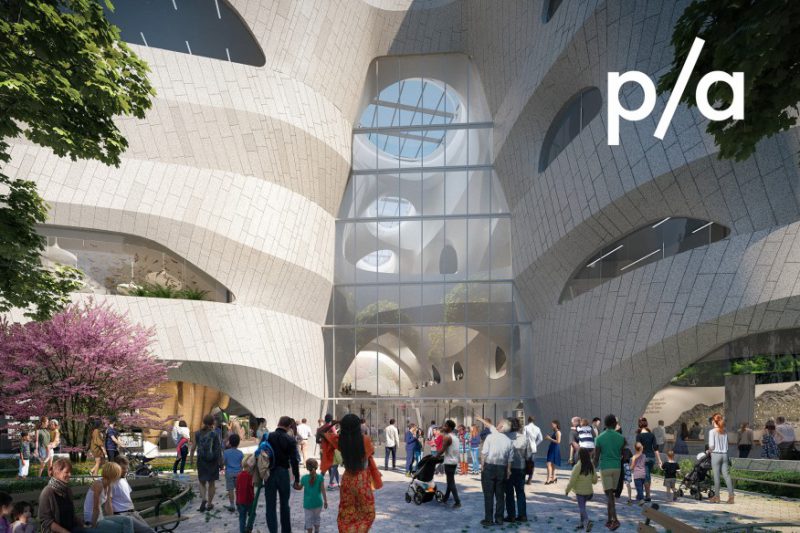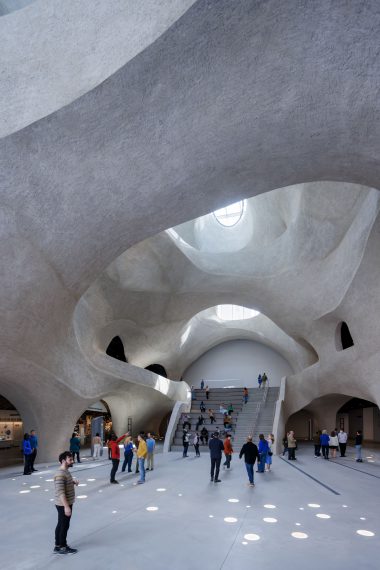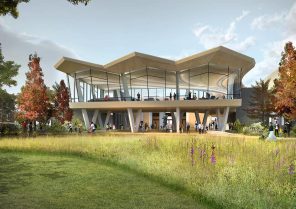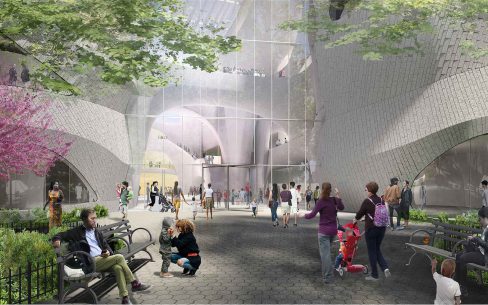Richard Gilder Center for Science, Education, and Innovation Wins 2020 Progressive Architecture Award
“I like the material exploration, and there’s an eye here—a good eye. It is hard to pull off formally, but the idea of the ice and the glacier brings a great clarity to it. And it seems appropriate for a natural history museum.”
—Juror Lorcan O’Herlihy, FAIA
Studio Gang’s Gilder Center at the American Museum of Natural History was selected as a winner in the 67th Annual Progressive Architecture Awards, recognizing how the project uses design to draw connections between individual users and the communities around it.
“Now, [the American Museum of Natural History] is set to receive a robustly contemporary addition—and a much-needed one, allowing it both to expand its exhibition spaces and to give a public face to its long-neglected backyard. Studio Gang’s Richard Gilder Center for Science, Education, and Innovation is at once an urbanistic coup and a daring museological experiment.
A lofty central exhibition hall forms the spine of the new wing, and it forges an immediate connection with the material on display: Warped and biomorphic, the structure’s design is influenced by the form-making forces of ice and water, expressed through an innovative concrete blend; its cavernous nooks and crannies give the visitor a thrilling sense of discovery. The adventure continues in the adjacent exhibition spaces, including a new section devoted to insects and another to butterflies, as well as educational spaces, a lecture hall, and more, all arrayed around the main entry foyer and accessible through the catacomb-hollows of the concrete core.
As the crowds circulate freely through the building’s passageways, they’ll catch glimpses of scientists hard at work in adjacent study spaces—picking apart fossils or examining rare specimens—courtesy of a new open-storage system that will bring an enormous amount of the museum’s back catalog into public view. And as if all this interior dynamism weren’t enough, Gang’s solution also provides for a dramatic new exterior on the Columbus Avenue side, complete with a public plaza enfolded by the canyon-like forms of the Central Hall. The museum complex, which has always turned its back on its Upper West Side neighbors, now presents them with an extraordinary new entryway, a tantalizing foretaste of the treasures within.”
Related
The Architect's Newspaper — "2019 AN Best of Design Awards"
Five Studio Gang projects were selected for the 2019 AN Best of Design Awards.
Fast Company — “Designing a Science Museum for a Post-Truth World”
“The design embodies the [American Museum of Natural History’s] ambition to become an avenue for discovery—an institution that makes scientific research transparent, that becomes a hub for public education, and that leaves visitors of all ages excited, inspired, and curious about the natural world.”



